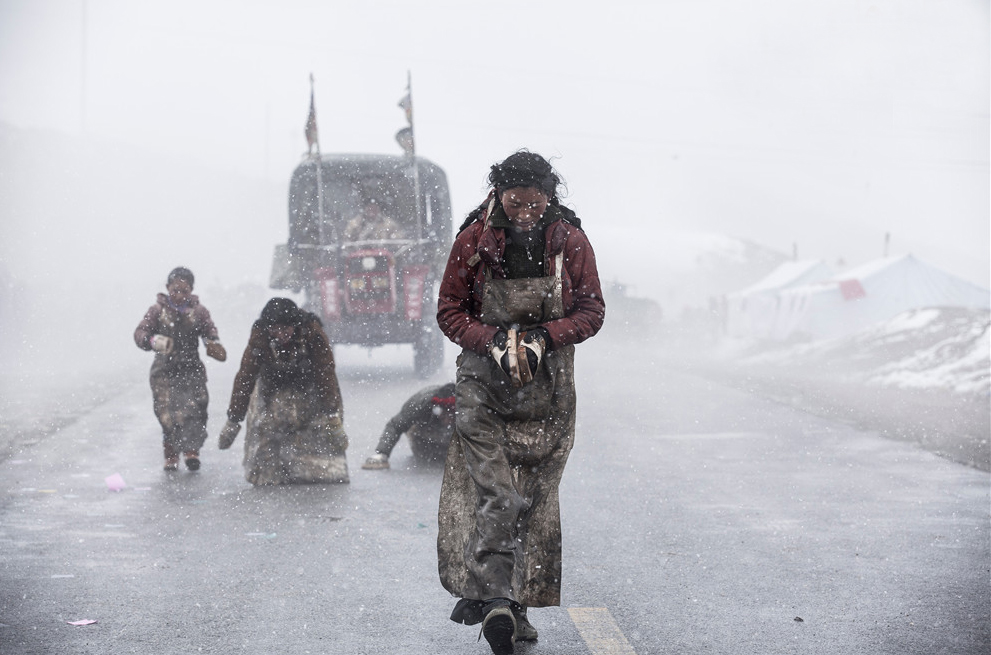
- Golden Globe Awards
Paths of the Soul (China)
Blurring the line between documentary and fiction, Paths of the Soul follows the journey of a group of Tibetan villagers who leave their families and homes in the small village of Nyima, a remote village in Mangkang County, part of China’s Tibet Autonomous Region, to make a Buddhist “bowing pilgrimage” to Lhasa, the holy capital of Tibet. The film takes the viewer on an incredible journey along the 1,200 km National Highway 318 over the course of 10 months that can be almost as painful to watch, following a family through suffering, death, childbirth and relentless religious resolve. Each of the travelers embarks on this near-impossible journey for very personal reasons: one needs to expunge bad family karma, a butcher wants to cleanse animal bloodstains from his soul, each has a different spiritual goal to fulfill, mostly to achieve other peoples’ happiness. The views of Tibet, filmed by cinematographer Guo Daming, are spectacular. Groundbreaking award-winning Chinese writer-director Zhang Yang (Shower, Getting Home) shot the film in Tibet while prepping and shooting another film at the same time, using nonprofessional actors and following a skeleton of a script, with sweet moments like the one where the group is given shelter by a kind old farmer and repay him by plowing his barley fields, and the birth of one of the travelers’ baby along the way. What is heartbreaking is not only the difficulties they go through – like the snow as they climb up to 12,000 feet, the rain, the cold – but the indifference of the world zipping by, cars and trucks along the winding road up and down the mountains, giving a sense of the subtle way in which Yang, while never tackling the political aspect of the Tibet-China relations, comments on the position of China to the plight of Tibet. The film is preceded by the official seal of China’s State Administration of Press, Publication, Radio, Film, and Television and amazingly it has had a successful run in Chinese theaters over the last year. The film begins with the preparation for the trip, which includes creating long aprons made of animal skin to protect the knees when “diving” on the ground, and protective wooden boards affixed to palms of hands to protect the hands. The ritual requires to touch the earth with the forehead and then clap the boards together, taking a few steps and then repeating the “dive” to the ground. A truck, which unfortunately breaks down halfway through the trip, follows with supplies and a tent which every night is put up as a cover for the cold nights.Director Yang was the guest of honor at a screening of the film hosted by CAA: he appeared with a huge hat and talked to the audience through an interpreter. “I had known about the practice and wanted to film it for many years,” he said, avoiding to openly express too much admiration for the Tibetans and the political issues which could arise. “I admired their tenacity and devotion. I also wanted to show the circle of life that the Tibetans celebrated by including the death of the eldest devotee and the birth of the new child, all at the foot of the sacred mountain and at the sacred temple to personify their reverence for the natural order of life.”